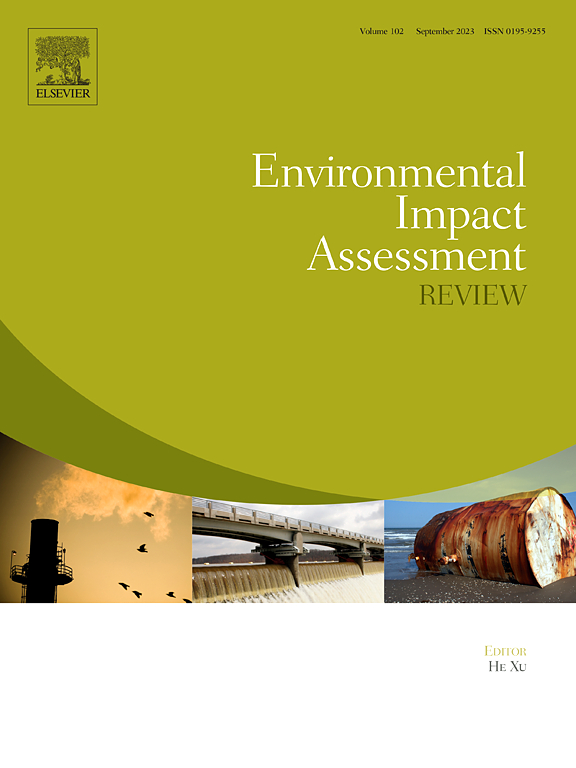Visual comfort impact assessment for walking spaces of urban historic district in China based on semantic segmentation algorithm
IF 9.8
1区 社会学
Q1 ENVIRONMENTAL STUDIES
引用次数: 0
Abstract
Urban historic districts (UHDs) are primarily walkable areas in built environments that preserve the traditional and local characteristics of a specific historical period. However, the impacts of the visual perception elements (VPEs) in UHD walking spaces on visual comfort related to the health-benefits have not been studied in depth. In contrast to previous studies, this study develops a comprehensive methodology framework for assessing visual comfort of UHD walking spaces to provide evidence for health-benefits based on Semantic Segmentation (Semseg) algorithm, integrating street view image data mining, Semseg computing, K-means cluster analysis, visual perception analysis and multiple linear regression analysis. A total of 11,633 images from Baidu Maps-Panoramic Static Imagery (BM-PSI) API were collected from 17 typical UHD walking spaces in China, forming 17 datasets of visual sequence images (VSIs). Three types of VPEs (Natural-VPE, Artificial-VPE and Cultural-VPE) were identified and quantified by Semseg Computing to calculate Visual Pixel Ratio (VPR) indicators. 15 representative VSIs were filtered by K-means cluster analysis, which were subsequently evaluated through web-based questionnaires involving 308 respondents with diverse demographic characteristics to derive General Visual Comfort Ratings (G-VCR) and Sub-Visual Comfort Ratings (S-VCR) indicators. Finally, multiple linear regression analysis was conducted to reveal the relationships between VPR and both G-VCR and S-VCR indicators respectively. Overall, the results reveal that Natural-VPE and Cultural-VPE have a significant positive impact on visual comfort, while Artificial-VPE exerts a opposite effect. Furthermore, demographic characteristics affect visual comfort differently: female respondents showed stronger preference for Natural-VPE, while male respondents were more sensitive to Artificial-VPE; middle-aged and elderly respondents favored environments with more Natural-VPE and Cultural-VPE, whereas young respondents were more affected by Artificial-VPE; higher-educated respondents exhibited greater appreciation for Natural-VPE and Cultural-VPE compared to non-higher educated respondents. The findings can provide valuable insights for promoting sustainable renewal of UHD walking spaces aligned with the Healthy City concept.

基于语义分割算法的中国城市历史街区步行空间视觉舒适影响评价
城市历史街区主要是保留特定历史时期的传统和本地特色的建筑环境中的步行区。然而,超高清步行空间中视觉感知元素(VPEs)对与健康效益相关的视觉舒适性的影响尚未得到深入研究。基于语义分割(Semseg)算法,结合街景图像数据挖掘、Semseg计算、K-means聚类分析、视觉感知分析和多元线性回归分析,构建了一种综合的超高清步行空间视觉舒适度评估方法框架,为健康效益提供证据。利用百度maps -全景静态图像(BM-PSI) API采集了中国17个典型超高清步行空间的11633幅图像,形成17个视觉序列图像(vsi)数据集。采用Semseg Computing对三种vpe (Natural-VPE、Artificial-VPE和culture - vpe)进行鉴定和量化,计算视觉像元比(VPR)指标。通过k均值聚类分析筛选了15个具有代表性的vsi,随后通过基于网络的问卷对308名具有不同人口统计学特征的受访者进行评估,得出一般视觉舒适评级(G-VCR)和亚视觉舒适评级(S-VCR)指标。最后进行多元线性回归分析,分别揭示VPR与G-VCR和S-VCR指标之间的关系。总体而言,研究结果表明,自然- vpe和文化- vpe对视觉舒适性有显著的积极影响,而人工- vpe则相反。此外,人口统计学特征对视觉舒适的影响也存在差异:女性受访者对自然vpe的偏好更强,而男性受访者对人工vpe的偏好更敏感;中老年受访者更喜欢自然vpe和文化vpe,而年轻受访者更喜欢人工vpe;与未受过高等教育的受访者相比,受过高等教育的受访者对自然vpe和文化vpe表现出更大的欣赏。研究结果可以为促进与健康城市概念一致的超高清步行空间的可持续更新提供有价值的见解。
本文章由计算机程序翻译,如有差异,请以英文原文为准。
求助全文
约1分钟内获得全文
求助全文
来源期刊

Environmental Impact Assessment Review
ENVIRONMENTAL STUDIES-
CiteScore
12.60
自引率
10.10%
发文量
200
审稿时长
33 days
期刊介绍:
Environmental Impact Assessment Review is an interdisciplinary journal that serves a global audience of practitioners, policymakers, and academics involved in assessing the environmental impact of policies, projects, processes, and products. The journal focuses on innovative theory and practice in environmental impact assessment (EIA). Papers are expected to present innovative ideas, be topical, and coherent. The journal emphasizes concepts, methods, techniques, approaches, and systems related to EIA theory and practice.
 求助内容:
求助内容: 应助结果提醒方式:
应助结果提醒方式:


